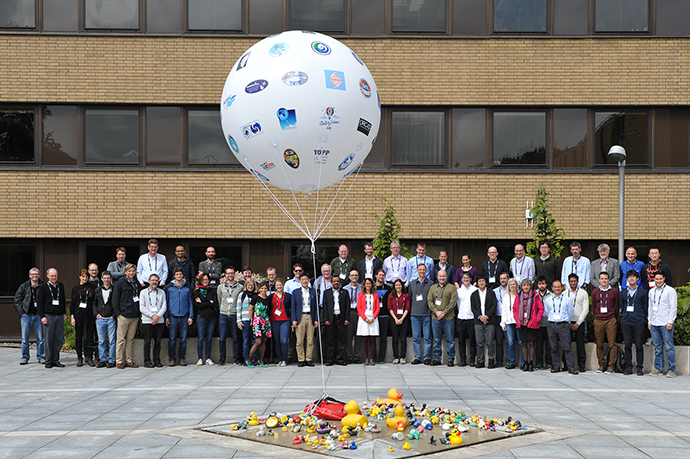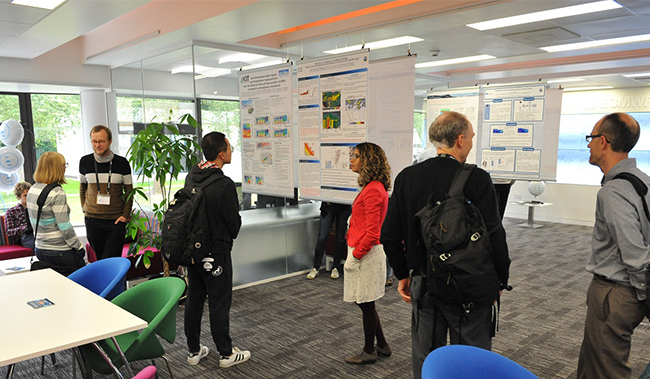From 11 to 13 June 2019, 70 scientists gathered at ECMWF to review the impact of field campaigns on numerical model development and to discuss how to strengthen the interactions between numerical weather prediction (NWP) centres and observation programmes. These interactions already take place, as processes that are not well understood and that cause large forecast errors often motivate field campaigns. NWP analyses and forecasts provide guidance on field campaign setup, the location of stations and research ships, and aircraft route planning. In return, many campaigns provide real-time observations that can be assimilated directly into forecasting systems. After completion of the campaigns, the observations are often used to comprehensively evaluate the forecasts and to better understand physical processes and improve their representation in models. Conversely, NWP analyses provide crucial context for interpreting the field observations. Further strengthening the links between observationalists and modellers can help maximise the benefits of observational campaigns for weather forecasting and vice versa.
Types of observational campaigns
Observational campaigns and field programmes cover different timescales, from long-term process monitoring at intensive meteorological observing sites or super-sites to gathering specialised observations over short periods. Observational campaigns differ in their aims. Most campaigns are designed to further understand physical processes and their interactions in the Earth system with a view to improving their representation in weather and climate models. Others investigate the impact of added observations on the initial conditions of forecasts, or they provide airborne and ground-based validation for novel remote sensing instruments deployed on satellites such as Aeolus.
Past and future campaigns
The workshop opened with overview talks on lessons learned from organising past field campaigns and on how observations from campaigns have been used to improve models at different NWP centres, e.g. in terms of the representation of cloud water-content and the partition between liquid and ice phase in clouds over the Southern Ocean. The sessions that followed were dedicated to campaigns targeted at cloud and boundary-layer processes, tropical cyclones, atmospheric rivers, mid-latitude dynamics and polar processes. Common to most campaigns is that, regardless of objective, location and period, they typically include standard observations from radiosondes and dropsondes that can be directly used in NWP data assimilation systems and thus provide swift feedback on model performance. Talks were also given on future observation platforms, such as stratospheric balloons and saildrones. A special talk was given by US Air Force Hurricane Hunters, documenting their reconnaissance flights around and into the centres of tropical cyclones.

The way forward
The workshop participants appreciated this rare opportunity to bring together observationalists and modellers and expressed their gratitude for ECMWF’s support of campaigns with forecast data. Part of the workshop was devoted to discussions on how the interactions between field campaigns, modelling and operational prediction centres could be further strengthened. The discussions were chaired by James Doyle (US Naval Research Laboratory), Chris Bretherton (University of Washington) and Gunilla Svensson (Stockholm University).
During these discussions, it was suggested that highlighting past success stories, in which observational campaign data were used to improve processes in models, would be valuable. Workshop participants also recommended that ECMWF (and other centres) produce a report on key processes and systematic errors for which the model development process would benefit from observational programmes. This could be a follow-on to the recent World Meteorological Organization (WMO) Working Group on Numerical Experimentation (WGNE) survey on systematic model bias (wgne.meteoinfo.ru/the-wgne-systematic-error-survey-is-published/). It was noted that this survey provides insights into the systematic errors that modellers care most about, but it does not focus on relevant processes or on how insights gained from observational programmes can help improve their representation in models. Discussions on this topic have recently started at ECMWF and the conclusions reached (see Box) were shared with other centres at the WGNE meeting held in Germany at the end of September.

Discussions during the workshop also touched on developing and sharing data analysis tools and defining a best practice catalogue for field campaigns to facilitate data access and exchange. To increase the discoverability of the data, the principal investigators (PIs) of campaigns were encouraged to publish the datasets in data journals. Another suggestion was to establish a calendar on the ECMWF website where researchers planning to use ECMWF data can share information on planned and upcoming field campaigns. It would also be valuable to gather information in a central repository for flight campaign tools, such as mission support systems, flight trajectories and corresponding model diagnostics. The observationalists also requested access to monitoring statistics of daily assimilated observations to verify whether campaign observations have been assimilated and to assess model–observation differences.

Presentations and recordings are available on the workshop web page at https://www.ecmwf.int/en/learning/workshops/workshop-observational-campaigns-better-weather-forecasts.
Possible field campaign targets
Consensus was achieved that future observational campaigns, or better exploitation of existing datasets, could help to improve the representation of several important processes in ECMWF’s Integrated Forecasting System over the coming years:
- The coupling of the lower atmosphere with the underlying surface, which is key for the prediction of near-surface weather. Specific issues need to be tackled over land, ocean and snow/sea-ice, e.g. the strength of land–atmosphere coupling, the impact of land heterogeneity on surface fluxes, the partition between latent and sensible heat flux over bare soil and vegetated areas, the thermodynamic coupling over sea ice, the coupling of ocean currents, waves and the atmosphere, and atmosphere–ocean coupling over boundary currents (e.g. the Gulf Stream). Efforts to improve the coupling of the lower atmosphere with the underlying surface would benefit from gathering collocated observations through the atmosphere–surface interface (e.g. in the atmosphere, at the surface, and in the ocean mixed layer/soil/snow) during future observational campaigns as well as from observations along a path across various surfaces (‘observational transects’), e.g. across the snow line, from bare soil to vegetated areas, and from flat terrain to mountain ridges.
- Low-level clouds, in particular maritime stratocumulus and low-level mixed-phase clouds at high latitudes. As the resolution of global models increases towards resolutions at which deep convection becomes resolved, the need for observational constraints for microphysical processes will increase as these processes will play an increasingly important role.
- Momentum transport and wind profiles in the boundary layer. A better representation of boundary-layer winds is key for predictions of near-surface and wind turbine height winds and of heat, momentum and moisture exchange at the interface between the atmosphere, ocean, land and ice. It is also important for the large-scale circulation forecast skill, which crucially depends on surface friction (or drag).
- Temperature, moisture and trace gases (ozone) in the stratosphere, for which very few independent observations with high vertical resolution exist.
- Temporal and spatial variability. As the resolution of global NWP models increases, it is becoming important to deploy observations with high temporal and spatial frequency to be able to verify the ability of NWP models to represent mesoscale variability in both the atmosphere and the ocean and particularly over boundary currents.

